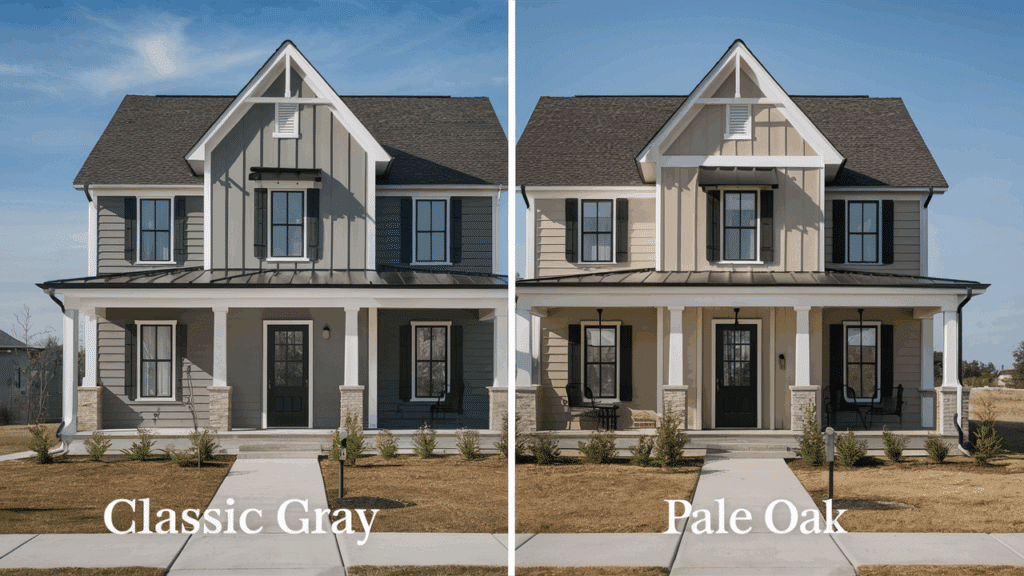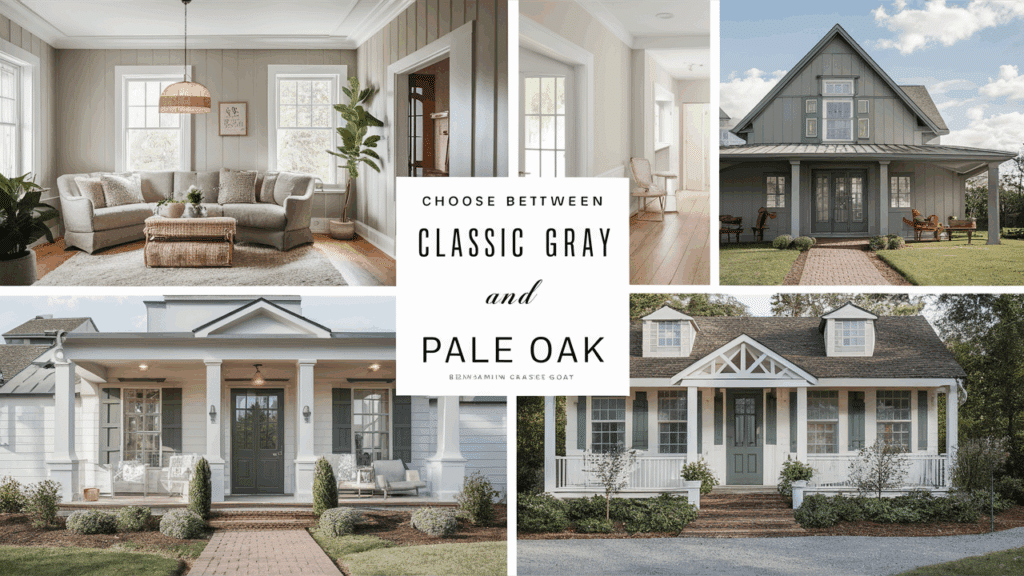Ever felt like you need a dictionary to understand what someone’s saying? You’re not alone.
In this article, I’ll show you why simple language is more powerful than complicated jargon. You’ll learn how to communicate clearly without trying to impress people with big words.
I’ve spent years helping people improve their writing, and I’ve seen firsthand how simplicity builds trust. When you speak plainly, people understand you immediately, with no confusion or second-guessing what you mean.
That’s what you’re looking for, right? Clear communication that gets your point across.
By the end of this article, you’ll know exactly how to replace complicated words with simple ones that pack more punch. Your writing will be clearer, your message stronger, and your readers happier.
Let’s make your words work harder for you.
Meet the Paints: Quick Overview

Choosing the right paint color can feel overwhelming. I’ve been there – staring at dozens of similar swatches, wondering which one will actually look good on your walls.
In this article, I’ll discuss two versatile neutrals from Benjamin Moore: Classic Gray and Pale Oak. You’ll learn exactly how these colors look in different lighting conditions and which rooms they work best in.
I’ve tested these paints in countless homes over my experience. No more guesswork or expensive mistakes!
Whether you’re:
- Repainting your entire home
- Refreshing a single room
- Trying to create a cohesive color scheme
This guide will help you decide if these popular neutrals are right for your space. Let’s dive into the subtle differences between these two elegant paint colors.
Compare the Undertones
Understanding undertones is crucial for choosing the right neutral paint. While they might look similar at first glance, Classic Gray and Pale Oak have distinct undertones that become more apparent in different lighting conditions.
Classic Gray (OC-23)
It reveals a subtle purple or violet undertone in certain lighting situations. This is most noticeable during midday natural light or under cooler artificial lighting. The violet undertone gives Classic Gray a sophisticated, cool elegance that works beautifully in modern spaces.
Pale Oak (OC-20)
Its undertones are slightly pink or purple-beige, which gives it a warmer, cozier feel compared to Classic Gray. The pink-beige quality becomes more prominent in warm light, especially during sunrise or sunset.
Pro Tip: Always sample these paints in your actual space before committing. The same color can look dramatically different depending on:
- Direction your windows face
- Time of day
- Type of artificial lighting
- Surrounding furniture and décor
Testing both colors on different walls will reveal how the undertones interact with your specific lighting conditions and help you avoid any unwelcome color surprises after painting.
Lighting Matters: How They Look in Different Rooms
Light dramatically transforms how paint colors appear on your walls. Here’s how these two neutrals perform in different lighting conditions:
North-Facing Rooms
Classic Gray tends to turn cooler in north-facing rooms, emphasizing its violet undertones. It can appear slightly blue-gray and more crisp in this light.
Pale Oak maintains its softness better in northern exposure. While it still cools somewhat, it retains more of its warmth and remains a gentle, muted beige rather than turning overly cool or stark.
South-Facing Rooms
Classic Gray becomes its most flattering in southern light. The warm sunlight balances its cooler undertones, resulting in a bright, clean neutral that feels fresh without being stark.
Pale Oak can really show its warmth in south-facing rooms. The beige aspects become more prominent, and the pinkish undertones might become more noticeable, creating a cozy, inviting atmosphere.
Light Intensity Effects
In bright rooms:
- Classic Gray appears lighter and more airy
- Pale Oak shows more depth and dimension
In low-light spaces:
- Classic Gray can flatten a bit and appear more gray
- Pale Oak deepens considerably, showcasing its richer undertones
This is why sampling in your specific room is so important; the same color can look remarkably different depending on the quality and quantity of light it receives.
Room-by-Room Recommendations
Finding the perfect spot for each color can make all the difference in creating a cohesive home. Here’s where each of these versatile neutrals really shines:
Classic Gray Works Best In
Minimalist bedrooms benefit from Classic Gray’s subtle, clean appearance. The soft gray creates a calm, uncluttered feel that promotes relaxation without feeling cold or clinical. Its slight violet undertone adds just enough interest without overwhelming the minimalist aesthetic.
Bright kitchens gain a contemporary yet timeless look with Classic Gray. The color reflects plenty of light while providing more warmth than a stark white. It pairs beautifully with both white cabinets and darker wood tones.
Living rooms with cool-toned decor become more unified with Classic Gray walls. This neutral complements blues, greens, and purples without competing against them, creating a harmonious backdrop for your furniture and art.
Pale Oak Excels In
Cozy living rooms feel instantly more welcoming with Pale Oak. Its warmer undertones create an inviting atmosphere that encourages conversation and relaxation.
Traditional or farmhouse-style spaces gain authentic charm from Pale Oak’s warm greige tones. The color has enough character to feel intentional without overwhelming conventional architectural details.
Hallways or open-plan areas benefit from Pale Oak’s versatility. It creates visual flow between different spaces while adding just enough warmth to prevent these transitional areas from feeling cold or sterile.
Both colors offer exceptional versatility, but these specific applications help maximize their unique characteristics for the most flattering results.
Compare Side-by-Side: Visual Impact
When viewed next to each other, Classic Gray and Pale Oak reveal subtle but important differences that can significantly impact your space:
Overall Impression
Classic Gray appears lighter and more airy overall. It has a more modern feel with its cleaner, less complicated undertones. The slight violet undertone gives it a sophisticated edge that works beautifully in contemporary spaces.
Pale Oak feels creamier and slightly richer. Its complex undertones create more depth and warmth, making it feel more grounded. This complexity gives it a timeless quality that bridges both modern and traditional design styles.
How Surrounding Elements Affect Perception
White trim creates different effects with each:
- With Classic Gray, bright white trim creates a crisp, defined contrast that emphasizes the gray’s coolness
- With Pale Oak, white trim softens the overall look, highlighting the paint’s warmer undertones
Wood tones interact uniquely:
- Classic Gray pairs beautifully with cooler woods like ash or whitewashed oak
- Pale Oak complements warmer woods like cherry, walnut, or honey oak
Flooring makes a dramatic difference:
- Dark hardwoods make Classic Gray appear lighter and more stark
- The same dark floors make Pale Oak feel more balanced and cozy
- Light floors amplify Classic Gray’s brightness
- With Pale Oak, light floors create a seamless, flowing effect
Furniture colors can transform these neutrals:
- Blue furniture enhances the Classic Gray’s coolness
- Warm-toned furnishings (terra cotta, rust, gold) bring out Pale Oak’s pink undertones
Remember that colors never exist in isolation; the entire room works as a system, and each element influences how you perceive the wall color.
What Vibe Are You Going For?
The paint color you choose does more than cover your walls, it sets the emotional tone for your entire space. Before making your final decision, think about the feeling you want to create in your home:
Classic Gray Creates
A calm, airy atmosphere that feels open and uncluttered. The soft gray provides a sense of spaciousness and breathing room, making it perfect for those who want their home to feel like a peaceful retreat from a busy world.
Clean, gallery-like spaces where art and furniture can take center stage. Its subtle nature recedes into the background, allowing other elements in your room to shine without competition.
Modern sophistication without trying too hard. It has enough personality to feel intentional but stays quiet enough to feel timeless rather than trendy.
Pale Oak Delivers
A warm, welcoming environment that instantly makes people feel at home. Its subtle warmth creates spaces where people naturally want to gather and linger.
Lived-in comfort that feels established and thoughtful. This is not a stark, precious space—it’s one that feels broken in, in the best possible way.
Versatile coziness that works across different lighting conditions. The complex undertones ensure that the color maintains its inviting nature throughout the day.
Ask yourself: Do you want your space to feel like a serene, minimalist retreat or a warm, inviting haven? Your answer will guide you toward the perfect choice between these two exceptional neutrals.
The right color aligns with both your aesthetic preferences and the emotional experience you want to create in your home.
Real-Life Tips to Make Your Choice Easier
Making your final decision between Classic Gray and Pale Oak doesn’t have to be stressful. These practical testing methods will help you see exactly how they’ll look in your home:
Create Large Sample Boards
Paint both colors on poster boards (at least 2′ x 2′). Small paint chips can be misleading because they don’t show how color behaves at scale. Larger samples give you a much better idea of the actual impact.
Place these boards side by side on different walls. This direct comparison highlights the subtle differences between the two colors that might not be obvious when viewing them separately.
Test Throughout the Day
Morning light often has a bluish quality that will emphasize Classic Gray’s cooler tones and might make Pale Oak appear more balanced.
Midday sunshine typically shows the truest version of each color. This is when Classic Gray looks its brightest and Pale Oak displays its complex warm undertones.
Evening light (especially artificial lighting) can dramatically change both colors. Classic Gray might appear more flat while Pale Oak often glows with warmth during these hours.
Context Matters
Place your sample boards directly against your flooring to see how they interact. The contrast or harmony between your floors and walls significantly impacts the overall look.
Test against existing furniture pieces that will remain in the room. Your sofa, dining table, or bed frame colors will either enhance or clash with your paint choice.
Don’t forget to check against fixed elements like kitchen cabinets, bathroom tile, or stone countertops. These permanent features need to work harmoniously with your paint selection.
Taking these extra steps might seem time-consuming, but they’ll save you from the much bigger hassle of repainting an entire room later. Trust the process and you’ll find the perfect color for your space.
Conclusion
Choosing between Classic Gray and Pale Oak ultimately comes down to understanding your space and the feeling you want to create.
Both of these versatile neutrals offer exceptional flexibility and timeless appeal, but their subtle differences can significantly impact your home’s atmosphere.
Take the time to test these colors in your actual space, observing how they transform throughout the day and interact with your existing elements.
Remember that lighting conditions, surrounding materials, and even furniture can dramatically change how these paint colors appear.
By considering both the practical aspects of how these colors perform in different conditions and the emotional response they evoke, you’ll find the perfect neutral to create a home that not only looks beautiful but feels exactly the way you want it to. Trust your instincts—the right choice is the one that makes you feel at home.

